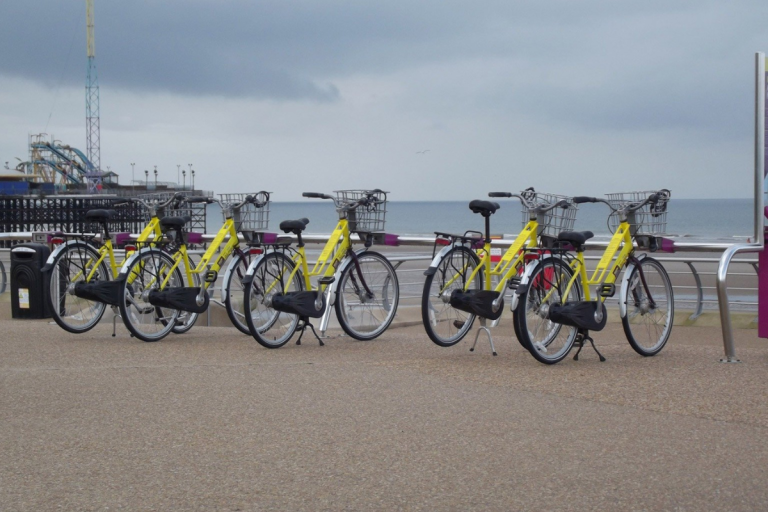How to Start a Dog Walking Business in the UK: A Step-by-Step Guide
Starting a dog walking business in the UK is a great way to combine a love of dogs with the flexibility of running your own business. With more people working long hours or juggling busy schedules, there’s a growing demand for reliable, friendly dog walkers. If you’re considering diving into this furry adventure, here’s everything you need to know.
Decide If It’s Right for You
Dog walking might sound easy, but it’s more than just a walk in the park. You’ll need to be comfortable handling dogs of all sizes and temperaments. You will also need to be prepared to walk several hours a day in all weather conditions.
You’ll need to be a strong communicator to build trust with dog owners who are entrusting you with their beloved pets. Owners see their dogs as part of the family, so clear communication is essential to reassure them that they’re in good hands. This means keeping them updated about how walks went, sharing any concerns you might notice about their dog’s behaviour or health, and being open to discussing their specific needs or preferences.
Always be friendly, reliable, and professional. Turn up on time and keep clients updated with how their dog’s walk went—little touches like sending a photo or message can go a long way.
Remember – you’ll need to be comfortable picking up and disposing of dog poo. You could face a hefty fine if you neglect this important aspect of the job.

Understand the Legal Bits
Before you start taking on clients, there are a few formalities to take care of to ensure your business runs smoothly and professionally. These steps will not only help you comply with legal requirements but also build trust with your clients. From registering as self-employed to securing the right insurance, getting these basics sorted early on will give you a strong foundation to grow your business. It’s all about being prepared and showing pet owners that you’re serious about providing a reliable, professional service for their faithful companions.
- Register as Self-Employed: Head to the HMRC website and register to ensure you’re paying taxes properly.
- Public Liability Insurance: This is non-negotiable. If a dog you’re walking injures someone or causes damage, you’ll be covered. Some policies also include cover for lost keys or veterinary fees.
- DBS Certificate: While not legally required, having a Disclosure and Barring Service (DBS) certificate can provide extra reassurance to potential clients. It shows you’ve undergone a background check and are trustworthy, which can be especially important when accessing clients’ homes.
- Dog Walking Contracts: Have agreements in place with clients to outline responsibilities, schedules, and rates. A simple template from the internet can get you started.
Get Some Basic Training
While you don’t need formal qualifications to become a dog walker, having some basic training can set you apart. Check local colleges or online courses for affordable options.
- First Aid for Dogs: Knowing how to handle emergencies like cuts or choking can reassure your clients.
- Canine Behaviour Courses: Understanding dog body language and training basics will help you manage any tricky situations.
Set Your Prices
Dog walking rates vary across the UK, so research what’s common in your area. Remember, charging too little may make people suspicious and being too expensive can put off potential clients. Try and find a middle ground.
- Group Walks: £10-15 per dog for an hour.
- Solo Walks: £15-25 per hour.
- Offer Incentives: Offering discounts for regular bookings or additional dogs from the same household can help attract clients.
Sort Out Transport and Gear
Reliable transport is key, especially if you’ll be covering a large area. A van or car with dog crates is ideal for safety and cleanliness. Don’t forget essentials like:
- A sturdy leash and harness for each dog.
- Biodegradable poo bags (always carry more than you think you’ll need).
- Water and collapsible bowls for longer walks.
- Wipes and anti-bacterial hand cleanser are important for obvious reasons!
- Lights and reflective clothing are essential as you’ll need to work in all kinds of weather, and occasionally at night. Being well seen at night will help drivers, cyclists, and runners see you while walking dogs.
- A dog whistle can sometimes be useful if you encounter aggressive dogs, as the high-pitched sound may distract or disorient them momentarily. Carrying a noise-emitting device, such as a whistle or a small air horn, can provide a way to interrupt aggressive behaviour and give you time to act. Always prioritise staying calm and creating distance from the aggressive dog if possible, as not all dogs will respond to noise distractions.
Stay Organised
As your business grows, keeping track of bookings, payments, and schedules can get tricky. Tools like Google Calendar or dog-walking apps can make life easier.
Expand Your Services
Once you’re established, consider adding extras like:
- Pet sitting for clients who go on holiday.
- Puppy visits to help new dog owners.
- Dog training for basic obedience.
Offering these can increase your income and attract a wider range of clients.
Keep Learning
The pet care industry is always evolving, so stay up-to-date by joining dog walking groups or forums. These can be great for advice, networking, and even referrals.

How to Market Your Dog Walking Business
Marketing your dog walking business effectively is the key to attracting clients and building a strong reputation in your community. With a bit of creativity and persistence, you can make sure your services stand out. Here are some practical strategies to get you started:
Facebook: A Facebook Page is a free and powerful tool to promote your business. Use a clear logo or photo for your profile picture and a friendly, inviting cover photo. Share photos of happy dogs (with the owners’ permission), success stories, and updates about your services. Ask satisfied clients to leave positive reviews on your page to build trust.
Local community Facebook groups are excellent places to find potential clients. Look for groups related to pets, dog owners, or neighbourhood communities. Engage in conversations—don’t just spam adverts. Offer advice, share your knowledge, and gently promote your business when it’s relevant.
Traditional marketing methods still work, especially in close-knit communities. Use eye-catching colours, clear fonts, and a friendly tone to design your flyers. Include essential details like your name, contact info, services, and rates. Distribute flyers in places dog owners frequent, such as parks, cafes, pet shops, and community centres.
Partner with local vets: Many pet owners trust their vet’s recommendations, so this can be a valuable partnership. Approach local veterinary clinics to see if you can leave flyers or business cards in their reception area. Offer a friendly introduction to the staff and explain how your services can benefit their clients.
Have a Website: A simple, well-designed website can help establish your business online and attract more clients. Include an About page to introduce yourself and your experience with dogs, a Services page to list prices and offerings, and a Contact page to make it easy for people to reach you. Use keywords like “dog walker in [Your Town]” and ensure your address, phone number, and business name are consistent across all platforms to optimise your site for local Search Engine Optimisation.
Google Business Profile: A Google My Business profile ensures your business appears in local searches and on Google Maps. Set up your profile with accurate information, including opening hours, contact details, and a brief description of your services. Encourage clients to leave reviews—positive feedback boosts your visibility and credibility.
Video Content: Videos are a fantastic way to showcase your business and personality. Share snippets of your dog walk and how you interact with dogs (with permission from the owners). Create short clips offering tips on dog care or training. Upload your videos to Facebook, Instagram, or even YouTube to reach a wider audience.
Word of mouth is one of the most trusted forms of marketing, especially in working-class communities. Ask happy clients to recommend you to their friends and family. Offer referral discounts, such as a free walk for both the existing client and the new one when they refer someone.
Local Events: Local dog shows, meetups, or charity events are prime opportunities to meet pet owners. Hand out business cards and flyers. Offer a free trial walk or a discount for people you meet at the event.
Marketing isn’t a one-off task. Regularly update your online presence, engage with your community, and keep trying new ways to reach potential clients. The more visible and approachable you are, the more your dog walking business will grow. With these strategies, you’ll have tails wagging and phones ringing in no time!
Final Thoughts
Starting a dog walking business in the UK is a brilliant way to earn a living while spending time with some four-legged friends. It doesn’t require a huge investment to get started—just a lot of passion, hard work, and a willingness to get a bit muddy now and then.
So, grab your wellies, sort out your insurance, and take the first step toward becoming your neighbourhood’s go-to dog walker. The dogs (and their owners) will thank you for it!







